The 10 Cities in Spain You Need to Visit—and When to Go
Vibrant cities, sunwashed beaches, tasty tapas, lisp-y pronunciations—Spain offers all of it and more. Nestled on the Iberian Peninsula, Espa?a beckons with a myriad of experiences, from the bustle of Madrid and Barcelona to the pristine beaches along the Costa del Sol, and the majestic peaks of the Pyrenees. When seeking out the best places in Spain, there are no shortage of options—and they cater to every type of traveler.
Related: This High Desert Town Is the Southwest's Favorite New Getaway Spot
Visitors flock to Spain year round for its renowned culture, such as flamenco music and dance, or for traditional annual festivals like La Tomatina—the world’s largest food fight, near Valencia in Bu?ol, where residents hurl overripe tomatoes. Speaking of tomatoes, they’re a staple of Spain’s cuisine, which features delicious seafood-laden paella, shareable tapas, and delectable wines.
Whether you're exploring historic landmarks, lounging on sun-kissed beaches, or savoring the flavors of Spanish gastronomy, an adventure through Spain promises an unforgettable experience. With such a range, it’s the kind of place to visit with a plan in hand. That's where we come in, with top-notch recommendations for the best places in Spain worth building your trip around.
History buffs can learn here about exploring the bygone wonders of Cordoba, food enthusiasts might be enticed to savor tapas in Seville, and relaxation-seeking nature lovers will probably be drawn to the underrated island of Menorca—one of our top destinations for 2024 travel. From top to bottom, mountain to sea, here are the 10 best places to visit in Spain this year.
Best for Urban Explorers: Madrid
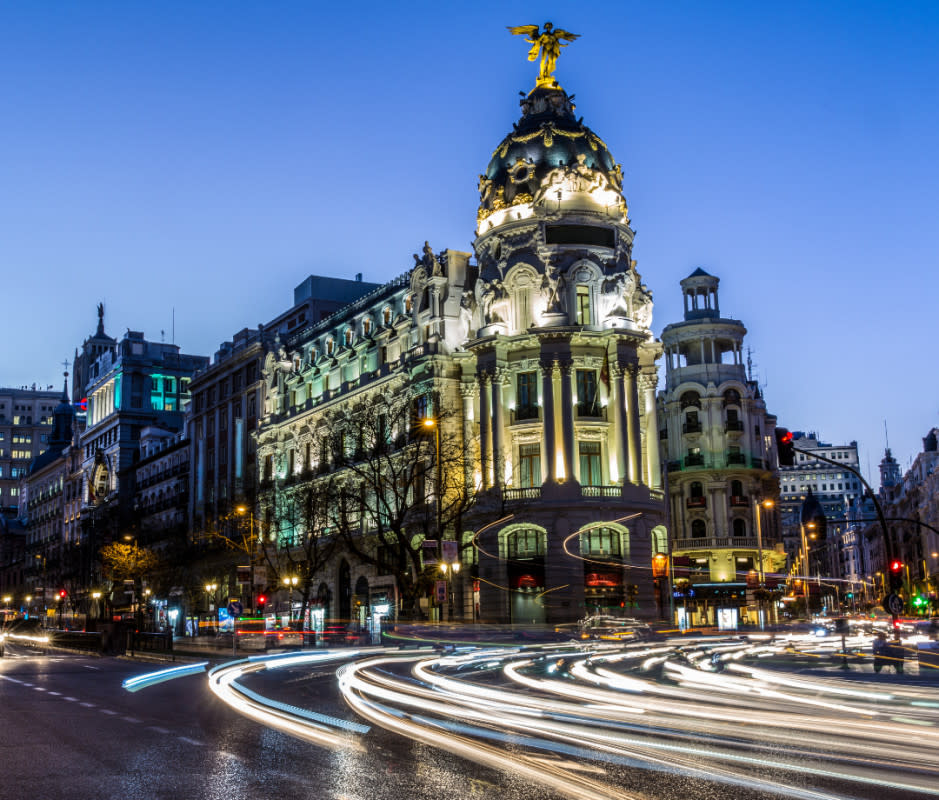
David G. Kelly/Getty Images
Madrid, Spain's vibrant political capital, is also its cultural and artistic hub, with world-class museums, including the renowned Prado Museum—home to masterpieces by artists like Goya and Velázquez. The Royal Palace, a stunning architectural marvel, and the iconic Puerta del Sol, a bustling central square, showcase the city's historical grandeur. For the real local experience, make sure to explore Madrid's lively neighborhoods, such as Malasa?a and Chueca, which offer a taste of everyday life in the city with charming cafes, tapas bars, expansive food halls, and vibrant street art. Delicious hole-in-the-wall bars and restaurants are plentiful in Madrid, but the city also offers top-notch fine dining at spots like DiverXO, boasting three Michelin stars, thanks to boundary-pushing, avant-garde dishes crafted by chef David Mu?oz.
Where to Stay: Palacio de los Duques Gran Meliá
Located in the artistic and cultural heart of Madrid, the Palacio de los Duques Gran Meliá is a luxurious boutique hotel housed in a 19th-century palace. Opulent rooms, a stunning garden with a swimming pool, and breathtaking views of the Royal Palace are all unique draws. Guests can dine at the Dos Cielos Madrid by Hermanos Torres, the hotel's Michelin-starred restaurant, and unwind in the exclusive Thai Room Wellness spa.
Best for Art and Architecture: Barcelona

Pol Albarrán/Getty Images
Barcelona, on the northeast coast, is renowned for its architectural marvels, artistic treasures, and a vibrant Mediterranean atmosphere. Antoni Gaudí's masterpieces, including the Sagrada Família and Park Güell, define the city's skyline and are must-see attractions. Make time to stroll down La Rambla, explore the narrow streets of the Gothic Quarter, and relax on the city's golden beaches. Barcelona’s art museums are also worth a visit, like MNAC (Museu Nacional d'Art de Catalunya) for a comprehensive journey through Catalan art, or the contemporary exhibits of MACBA (Museum of Contemporary Art Barcelona). A sunny afternoon spent on Barceloneta beach provides a relaxing escape, and the vibrant food scene, featuring delicious Catalan cuisine, will keep you happy and stuffed for the entirety of your stay.
Where to Stay: Mercer Hotel Barcelona
Situated in the Gothic Quarter, the Mercer Hotel Barcelona is a five-star boutique hotel housed in a medieval palace. This elegant hotel blends historic charm with contemporary design, offering luxurious rooms, a rooftop terrace with a swimming pool, and a Michelin-starred restaurant. With its prime location near the Barcelona Cathedral, guests can easily immerse themselves in the city's rich history.
Best for Hikers: Mallorca

Allard Schager/Getty Images
Mallorca, the largest of the Balearic Islands, is a Mediterranean paradise known for its stunning landscapes, crystal-clear waters, and charming villages. The Serra de Tramuntana mountain range offers breathtaking hiking trails, while the picturesque town of Valldemossa, with its cobblestone streets and historic monastery, is a cultural gem. Palma de Mallorca, the capital, boasts a beautiful cathedral and a vibrant old town, while the island's pristine beaches, such as Es Trenc, are a major draw and must-visit if you’re a sun-seeker. While in Palma de Mallorca, make sure to grab a beverage at Abaco, a cocktail bar housed in a historic 16th-century mansion, renowned for inventive tipples served in the mansion’s various opulent salons.
Where to Stay: Sant Francesc Hotel Singular
Located in the heart of Palma de Mallorca's historic center, Sant Francesc Hotel Singular is a five-star boutique gem set within a restored 19th-century mansion in Palma’s old town. The hotel exudes sophistication with its stylish decor, courtyard garden, and a rooftop terrace offering panoramic views of the city and a pool. Its proximity to landmarks like the Cathedral of Santa Maria and the Royal Palace of La Almudaina are also a plus.
Best for Andalusian Culture: Seville
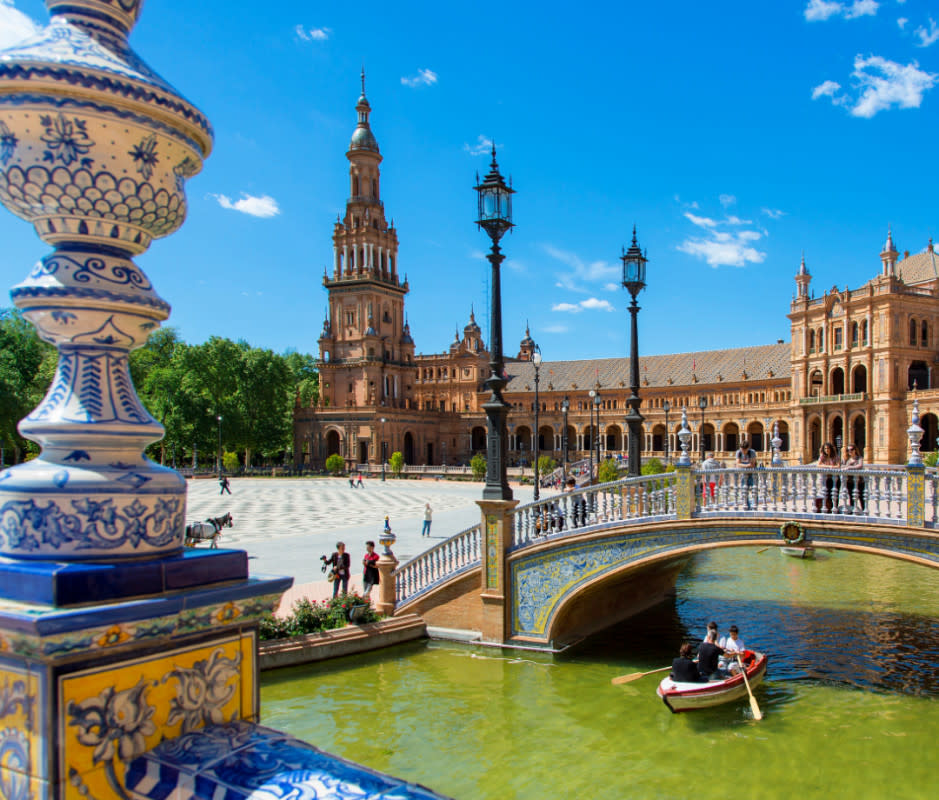
Sylvain Sonnet/Getty Images
Seville, in southern Spain, is a passionate city full of flamenco dancing and architectural marvels. The iconic Alcazar of Seville, a stunning palace with intricate Islamic architecture and lush gardens, is a must-visit, as is the Gothic Seville Cathedral—housing the Giralda tower. Wander through the historic Barrio Santa Cruz, with its narrow alleys and charming squares, to soak in the city's medieval charm. The Plaza de Espa?a, a grand square with a canal, is another architectural gem. Seville has a vibrant culinary scene, and a visit to El Rinconcillo, the city's oldest tapas bar, offers an authentic taste of Andalusian flavors. For a more modern twist, the Michelin-starred Abantal combines traditional ingredients with innovative techniques.
Where to Stay: Hotel Alfonso XIII, a Luxury Collection Hotel
The Hotel Alfonso XIII, part of Marriott’s Luxury Collection, is a historic property built in the style of a palace. Beautiful courtyards with Moorish-inspired architecture and a swimming pool surrounded by lush gardens make it a lovely place to kick back during your stay in Seville. Another plus is the hotel’s proximity to city landmarks, such as the Seville Cathedral and the Alcazar.
Best for Paella Fans: Valencia
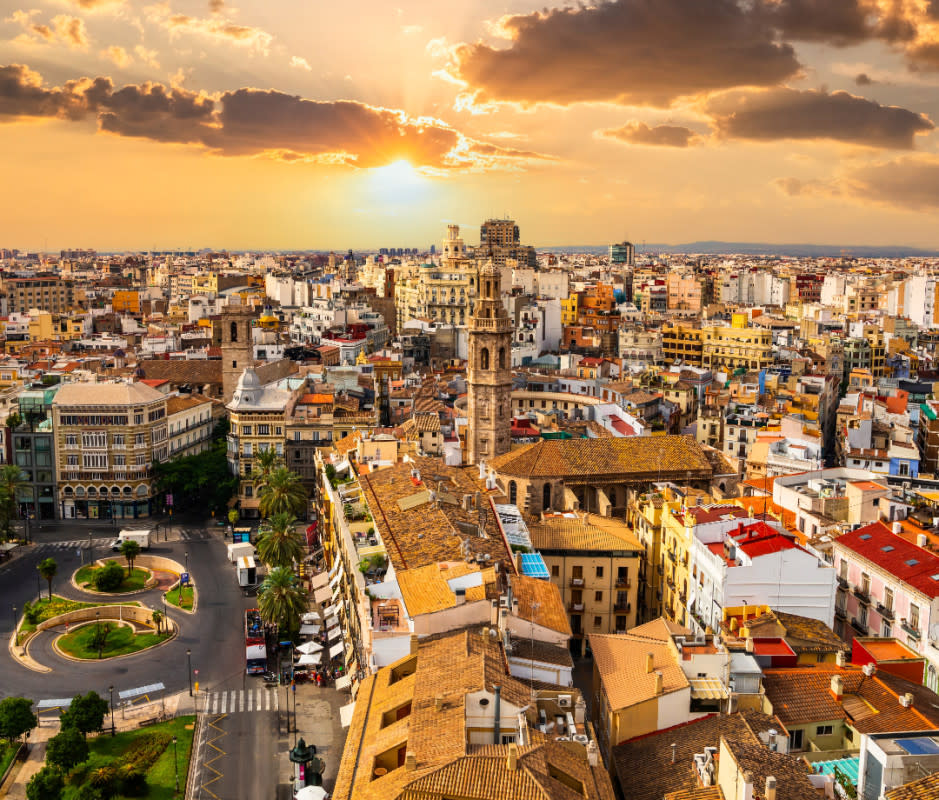
Anton Petrus/Getty Images
Valencia, on the southeastern coast, combines medieval history with stunning modernity in its futuristic architecture. One of the 12 Treasures of Spain, the City of Arts and Sciences is a must-see, featuring the Hemisféric theater and the Oceanografic aquarium. The historic Valencia Cathedral and the Silk Exchange provide glimpses into the city's medieval past, while the Turia Gardens, a lush park created on a former riverbed, makes for a beautiful stroll. Foodies take note, you're in the homeland of paella here. The classic rice-saffron-chicken-seafood dish was developed in Valencia in the 19th century and remains a big part of the city's culinary cultural identity. For an authentic gastronomic experience, try the paella at La Pepica, a longstanding beachfront favorite, or savor inventive dishes that change daily at Ricard Camarena Restaurant.
Where to Stay: Caro Hotel
The Caro Hotel in Valencia is a monument boutique hotel, housed in a 19th-century palace and just a stone’s throw from the Valencia Cathedral. The walls of this avant-garde hotel are over two thousand years old, and feature an original mosaic from the founding of Valencia in the Roman era, 2nd century BC. Individually decorated rooms, a charming courtyard, and a rooftop terrace, as well as its central location in the heart of the old town, make it an ideal pick.
Best for Beaches and Offshore Nightlife: Ibiza

Gonzalo Azumendi/Getty Images
Ibiza might be primarily known for its vibrant and raucous nightlife, but it also boasts stunning natural beauty and a rich cultural scene. Beyond the clubs, the island offers tranquil beaches such as Cala Comte and Ses Salines. Dalt Vila, the fortified old town of Ibiza Town, is a UNESCO World Heritage site with cobbled streets and historic landmarks. Es Vedrà, an eye-catching rock formation off the coast, adds an element of mystery, while the Hippy Market in San Carlos provides a unique shopping experience. For those still wanting to party, make sure to pay a visit to the iconic cherry-adorned building of Pacha—a glamorous nightclub with top DJs—or Amnesia for its massive rooms and epic sound system that make it perfect for EDM sets.
Where to Stay: Ca Na Xica
Ca Na Xica, located in the peaceful countryside of Ibiza, is a luxury boutique hotel surrounded by lush gardens and scenic landscapes. This adults-only retreat offers elegantly designed rooms, a serene pool area, and a spa for relaxation. With its tranquil setting, Ca Na Xica provides a perfect escape from the vibrant nightlife of Ibiza while still being within reach of the island's beautiful beaches and attractions
Best for Moorish History: Granada
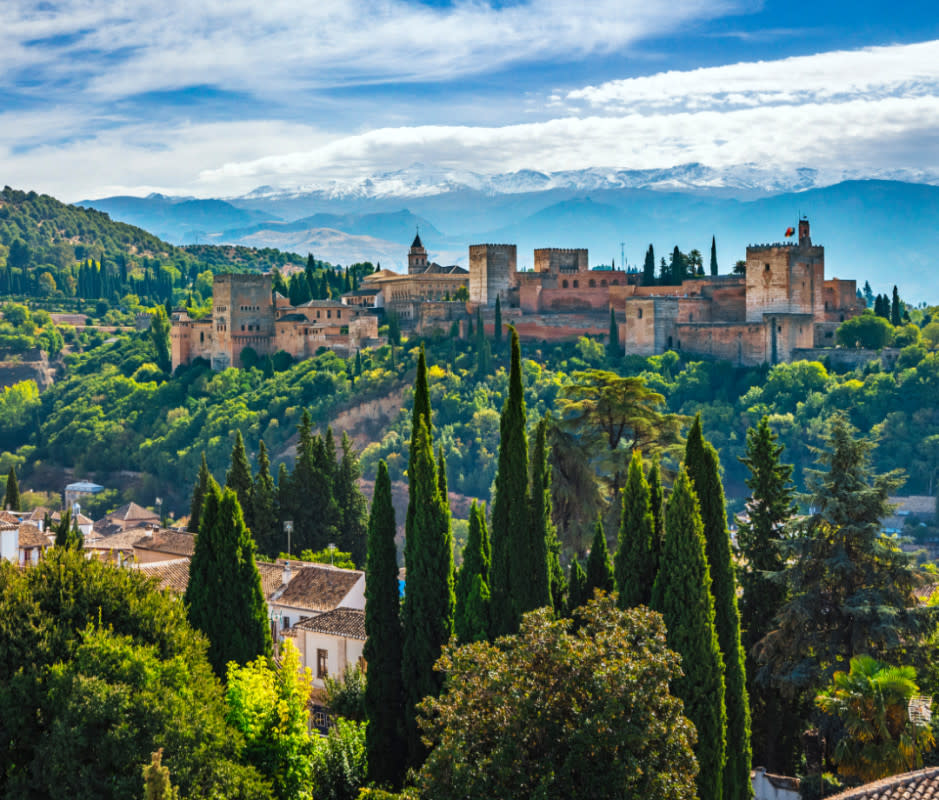
Gonzalo Azumendi/Getty Images
Granada, home to the iconic Alhambra, is a history lover’s dream. The city’s crown jewel, Alhambra, is a palace and fortress built in the mid-13th century by the Nasrid Dynasty, and is now a UNESCO World Heritage site with intricate palaces, serene courtyards, and panoramic views of the Sierra Nevada. Another must in Granada is a stroll through the historic Albayzín neighborhood, a labyrinth of narrow streets and white-washed houses that preserves the city's Moorish past. The Granada Cathedral, with its impressive Renaissance architecture, is another landmark to add to your itinerary. For a taste of Andalusian cuisine, El Trillo, situated in the Albayzín, offers traditional dishes with a view, or you could indulge in tapas at Bodegas Casta?eda, one of the oldest taverns in Granada.
Where to Stay: Palacio de Santa Paula, Autograph Collection
The Palacio de Santa Paula, part of Marriott’s Autograph Collection, is a luxurious boutique hotel set in a 16th-century convent. This beautifully restored property blends historic charm with modern comforts, offering nice classic rooms, a courtyard garden, and a restaurant serving Andalusian cuisine.
Best for Foodies: San Sebastián
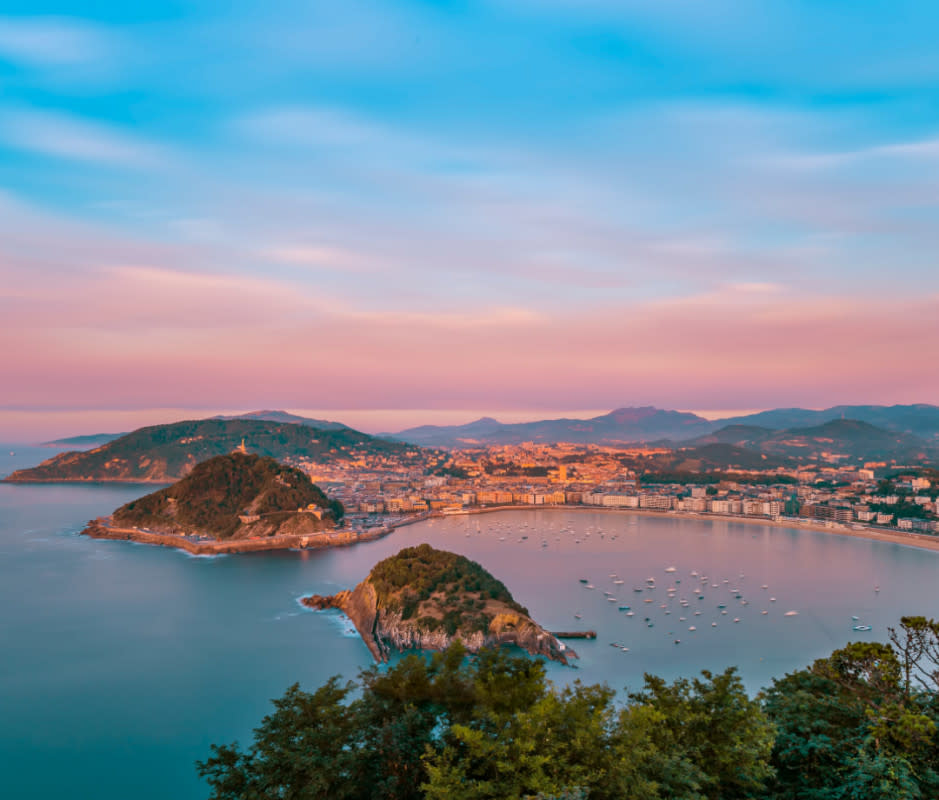
Dhwee/Getty Images
San Sebastián, nestled on the Bay of Biscay in northern Spain's Basque Country, is a city renowned for its stunning coastal scenery and culinary excellence—offering a perfect blend of relaxation and vibrant city life. Must-see stops include Monte Urgull for panoramic views of the city, the historic Old Town of Parte Vieja with its narrow streets and lively pintxos bars, and its picturesque stretch of shore at La Concha Beach. As a gastronomic haven, San Sebastian boasts an impressive two three-Michelin-starred restaurants: Arzak, known for its avant-garde Basque cuisine, and Martin Berasategui, offering a French-inspired dining experience in a gorgeous hillside setting.
Where to Stay: Hotel de Londres y de Inglaterra
Overlooking La Concha Beach, the Hotel de Londres y de Inglaterra is more than just a beachside hotel. Established in 1865, it features Belle époque architecture, a charming lobby, comfortable rooms, and a rooftop terrace with panoramic views of the bay. The spa is not located on-property, but a short walk away and still worth a visit, thanks to the hotel’s partnership with La Perla Spa, and a gorgeous Bella époque era pool.
Best for Serenity Seekers: Menorca
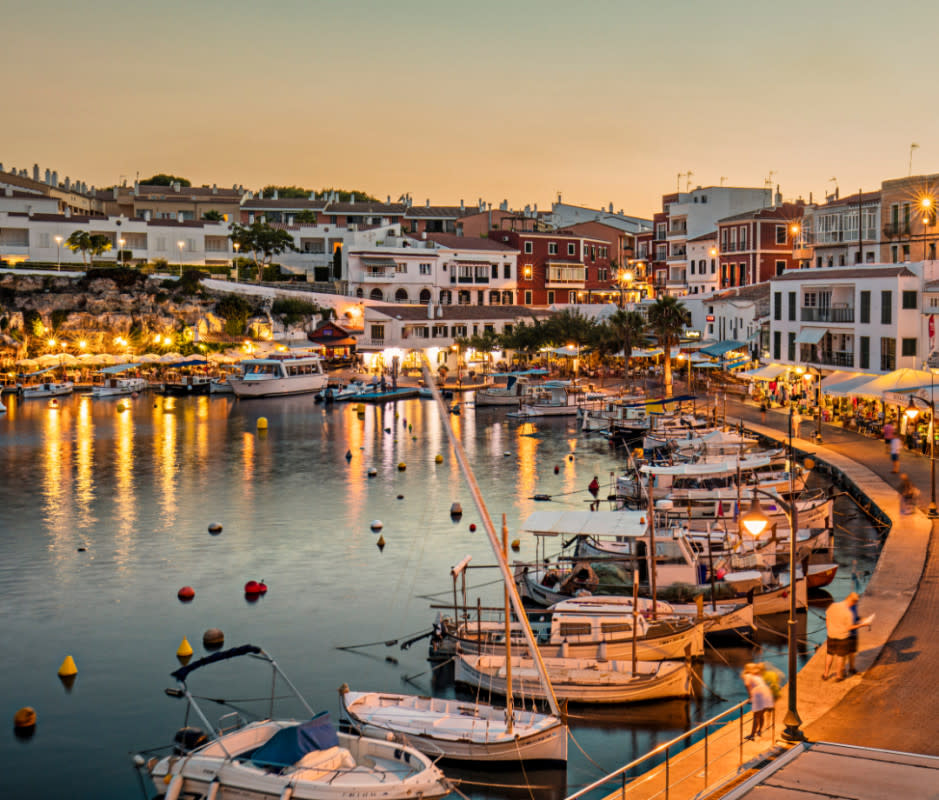
Xavier Arnau
Menorca, the quieter sibling of Mallorca, is a Balearic Island known for its unspoiled beauty, pristine beaches, and rich history. It’s also one of our top travel recommendations for 2024. The island's coastline is dotted with secluded coves and clear turquoise waters, making it a paradise for beach lovers. The historic Ciutadella, with its medieval streets and impressive architecture, is a gorgeous place to stroll and shop, and Menorca's biosphere reserves, such as S'Albufera des Grau, offer opportunities for nature lovers to explore diverse ecosystems. Make sure to grab dinner at Ses Voltes in Ciutadella, which offers Mediterranean cuisine with a focus on fresh, local ingredients, and to grab a cocktail at Sa Cova D’en Xoroi—a bar nestled in a natural cave overlooking the harbor.
Where to Stay: Villa Le Blanc, Gran Meliá
Villa Le Blanc, part of the Gran Meliá luxury collection, is a sustainable boutique hotel in Menorca, set against the backdrop of the Mediterranean Sea on the island’s south coast. This exclusive property offers lavish accommodations, some with private balcony jacuzzis and breathtaking sea views. Guests can enjoy Mediterranean flavors at the hotel's fine dining restaurant, S'Amarador, relax in the spa, or walk a few steps off the property to the beach.
Best Historical Melting Pot: Cordoba

traveler1116/Getty Images
Cordoba, located in Andalusia, is a unique city that preserves a diverse heritage that spans Moorish, Christian, and Jewish influence. Mezquita, a breathtaking mosque-cathedral that seamlessly blends Islamic and Christian influences, features a mesmerizing forest of horseshoe arches. Stroll through the charming streets of the historic Jewish Quarter, called Judería, with its whitewashed buildings, flower-filled courtyards, and the Synagogue of Cordoba. The Alcázar de los Reyes Cristianos, a medieval fortress with beautiful gardens, offers panoramic views of the city. To savor Cordoban cuisine, visit El Churrasco, renowned for its traditional Spanish dishes served in a historic setting. For a contemporary twist, try Noor, which offers a fusion of Andalusian and Moorish flavors.
Where to Stay: Hospes Palacio del Bailío
Hospes Palacio del Bailío is set in a 16th-century palace, boasting a blend of historic architecture and contemporary design, offering stylish rooms, a beautiful courtyard with a swimming pool, and a spa for relaxation. Swim around in their indoor Roman baths, or take a dip in an outdoor swimming pool surrounded by fragrant fruit trees.
When to Visit Spain
The allure of Spain beckons throughout the year, but the best times to visit depend on your preferences. Spring, from around March to May, is a great shoulder season choice, as the countryside bursts into a kaleidoscope of wildflowers, and temperatures hover in the comfortable mid-60s to mid-70s. This season also allows you to explore historic cities like Barcelona and Seville without the intense summer crowds.
The summer months of June to August present the classic sun-soaked Spanish experience, with coastal regions, such as Costa del Sol, boasting blue skies and inviting beaches. Autumn, from September to November, offers a milder climate, making it an ideal time for cultural pursuits in Madrid or hiking the scenic trails of the Pyrenees. For a taste of Spanish winter charm, December to February sees festive lights adorning city streets, and skiing enthusiasts can hit the slopes in the Sierra Nevada.
Flights to Spain
One of the most popular countries in the world to visit, Spain was drawing more than 70 million visitors per year prior to the pandemic. Flights from anywhere in the U.S. to major city hubs like Madrid and Barcelona are plentiful, but those seeking more affordable options should consider an off-peak trip—essentially any time of year besides summer.
A winter trip, between November and February, will yield the cheapest flights, though you will likely have to forgo any beachside stints. Good flight deals are still to be found for shoulder season travel, in late spring from April to May, and early autumn from September to October, and will yield milder weather and relatively light crowds.
